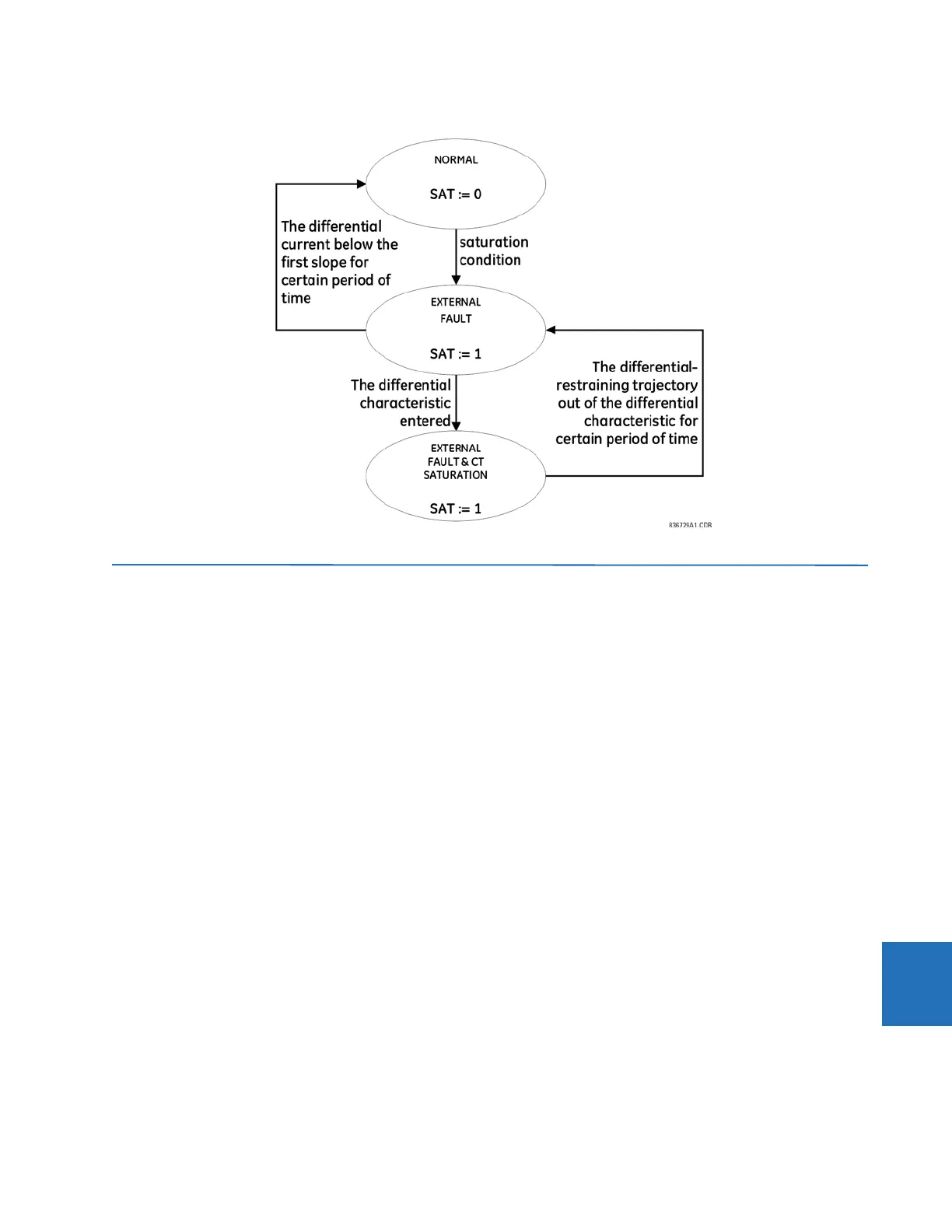CHAPTER 9: THEORY OF OPERATION OUTPUT LOGIC AND EXAMPLES
B90 LOW IMPEDANCE BUS DIFFERENTIAL SYSTEM – INSTRUCTION MANUAL 9-9
9
Figure 9-7: Saturation detector state machine
9.6 Output logic and examples
9.6.1 Output logic
The biased differential characteristic uses the output logic shown in the following figure.
For low differential signals, the biased differential element operates on the 2-out-of-2 basis utilizing both the differential
and directional principles.
For high differential signals, the directional principle is included only if demanded by the saturation detector (dynamic 1-
out-of-2 / 2-out-of-2 mode). Typically, the directional principle is slower, and by avoiding using it when possible, the B90
gains speed.
The dynamic inclusion/exclusion of the directional principle is not applied for the low differential currents but is included
permanently only because it is comparatively difficult to reliably detect CT saturation occurring when the currents are
small, for example saturation due to extremely long time constant of the DC component or due to multiple autoreclosure
actions.

